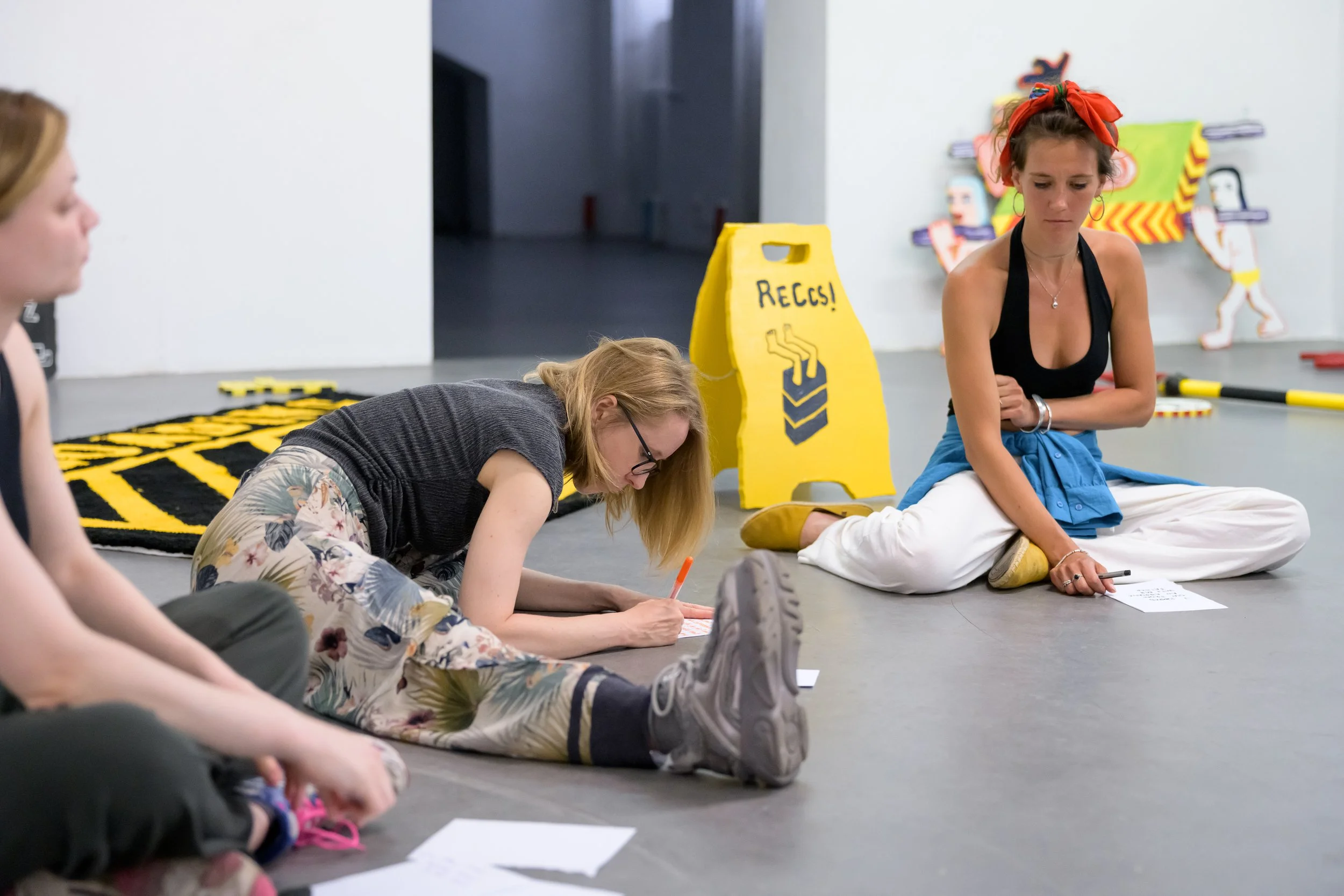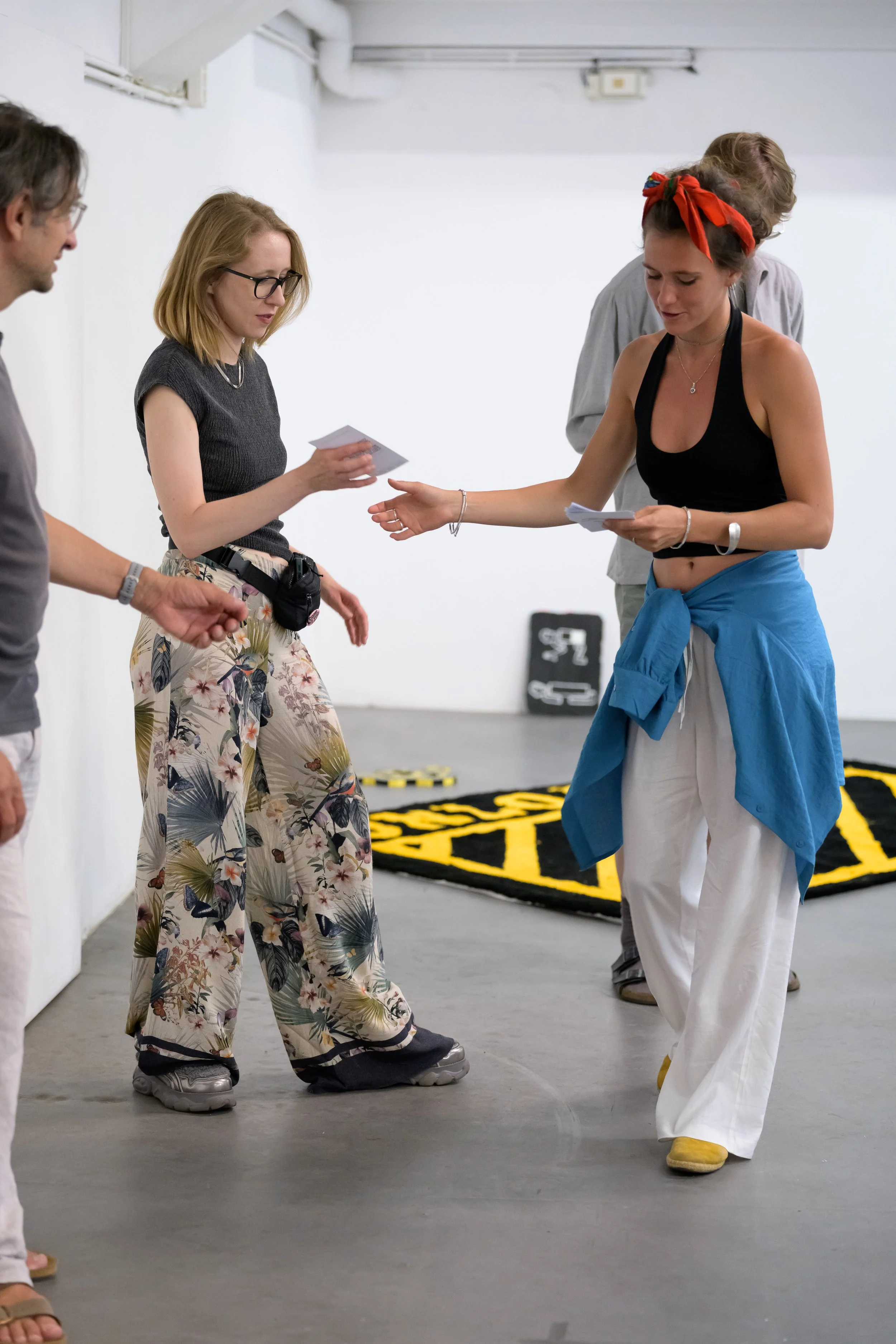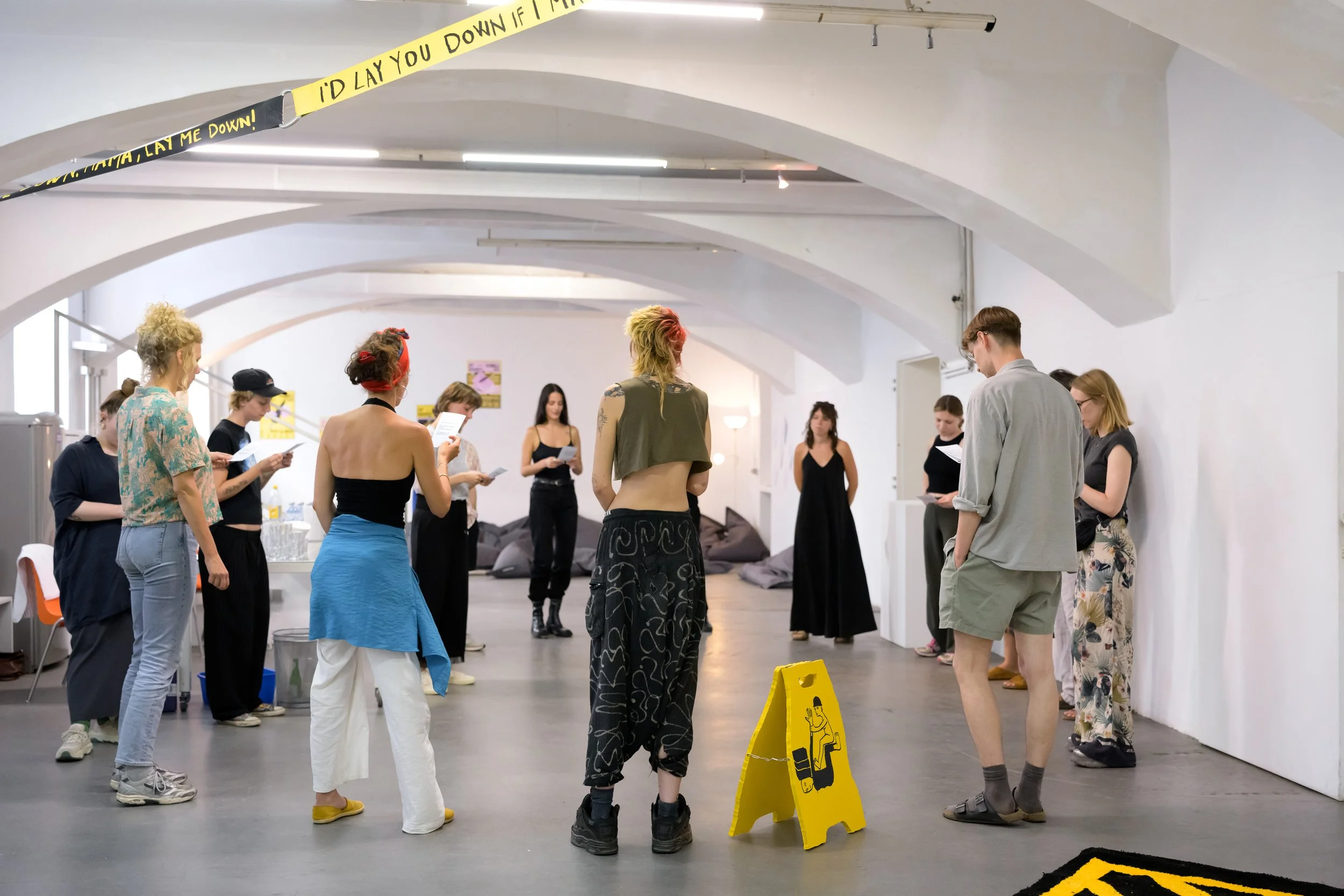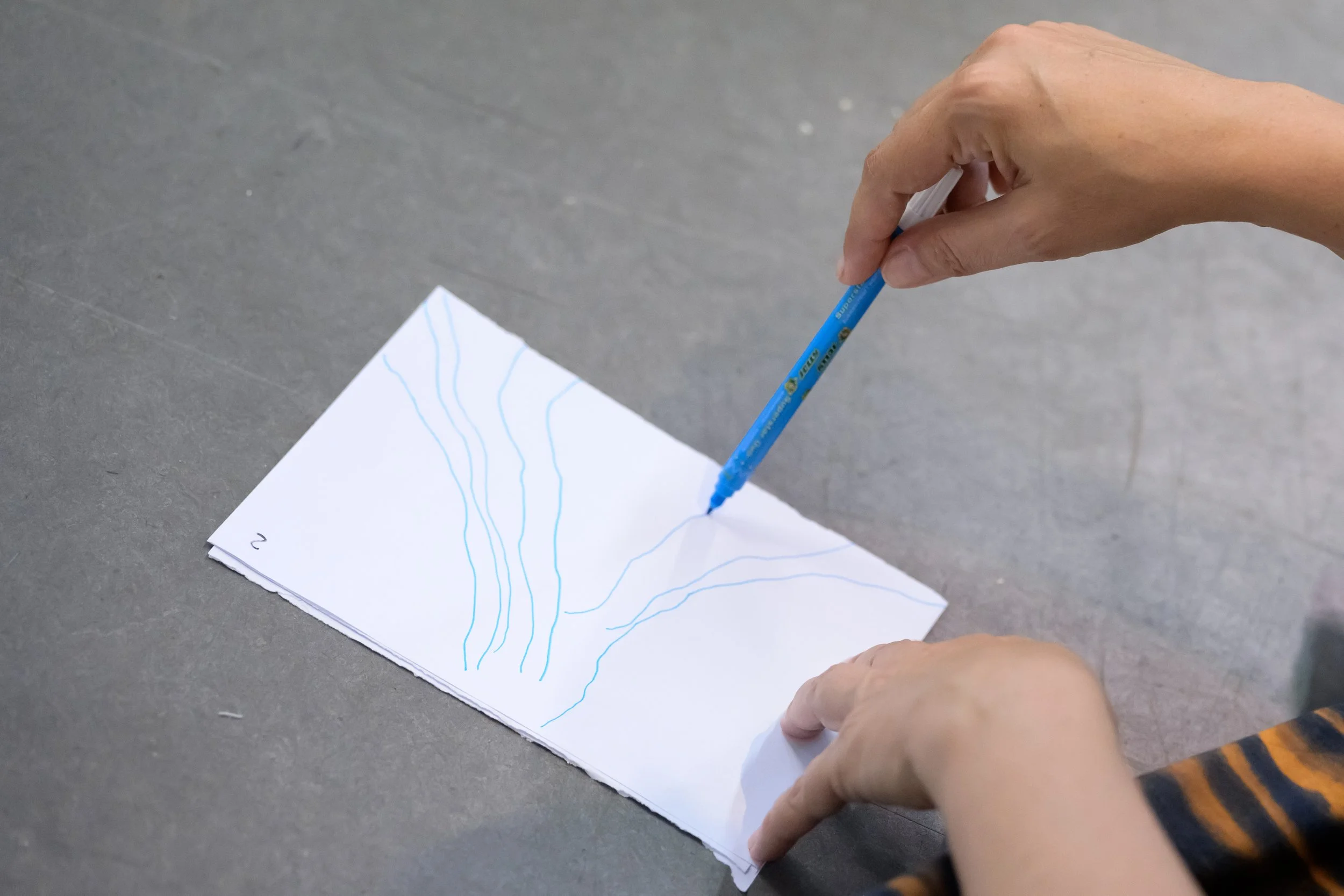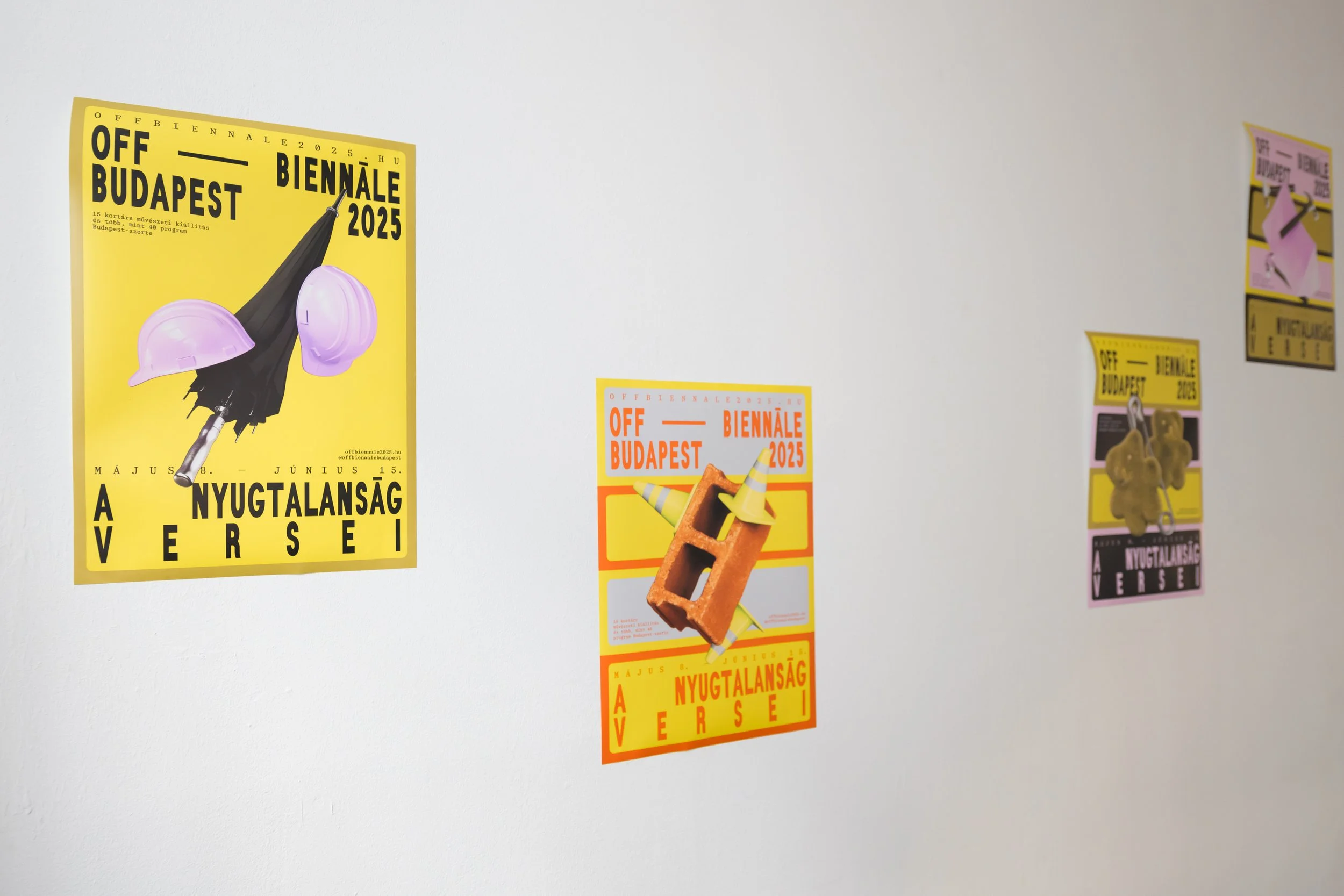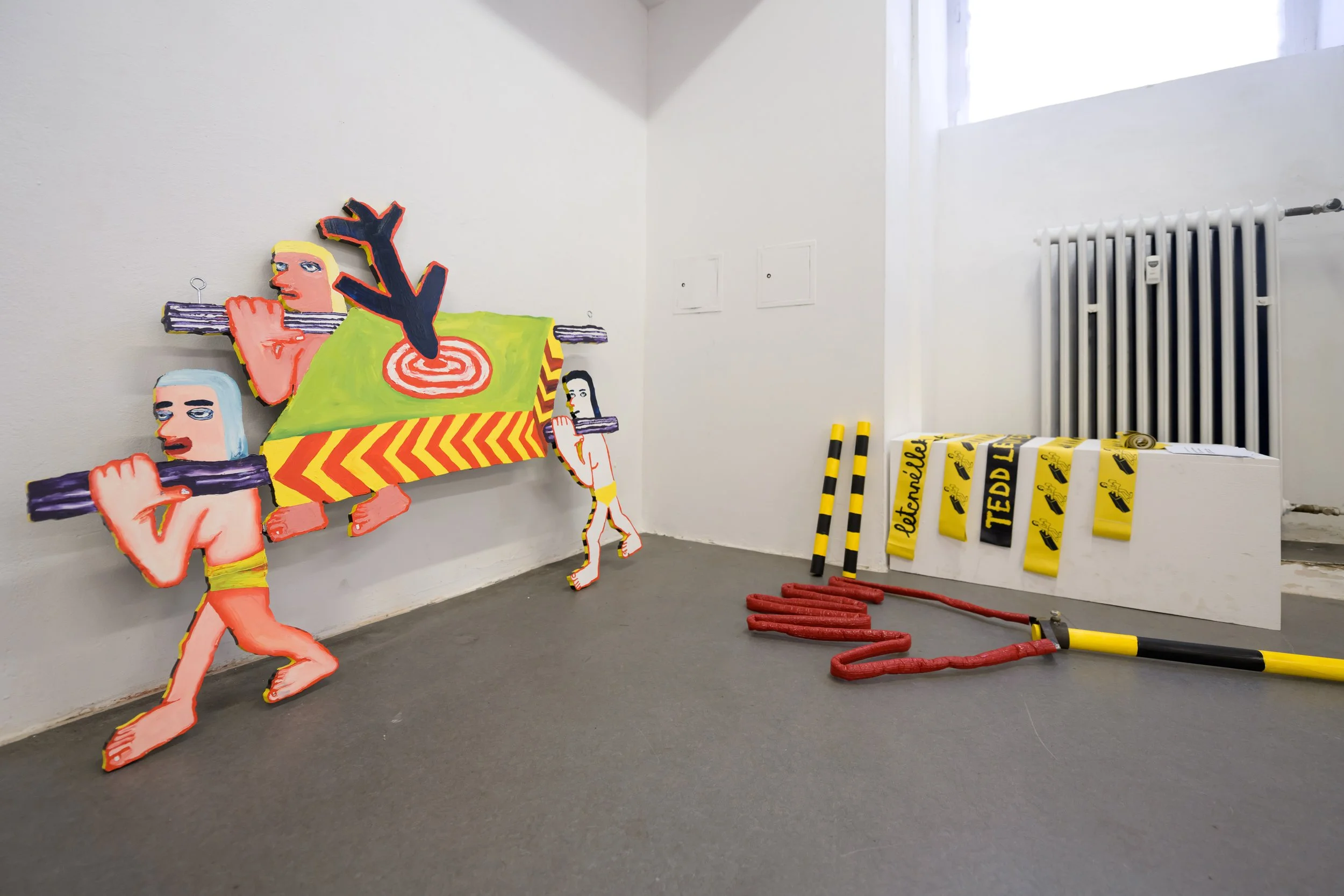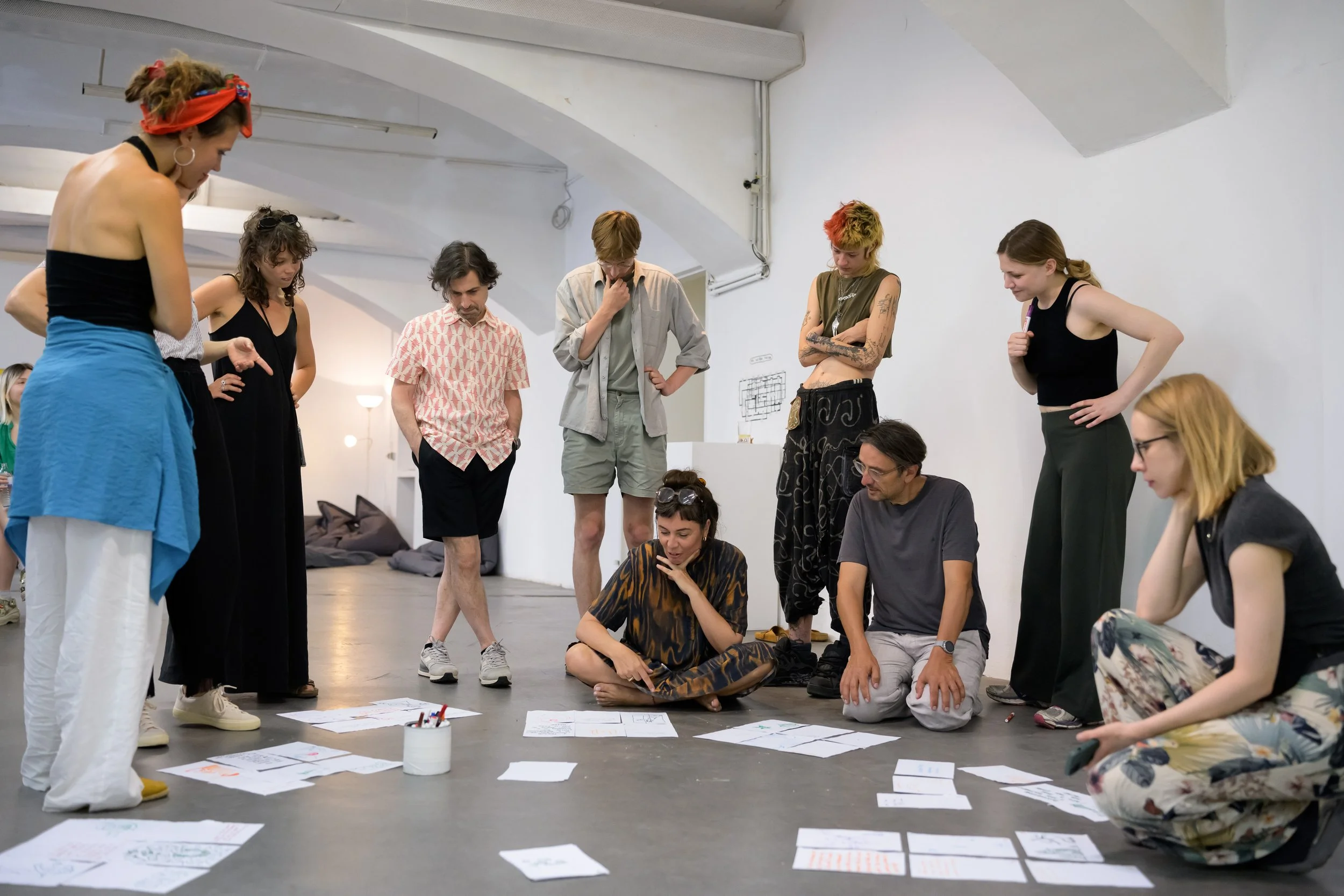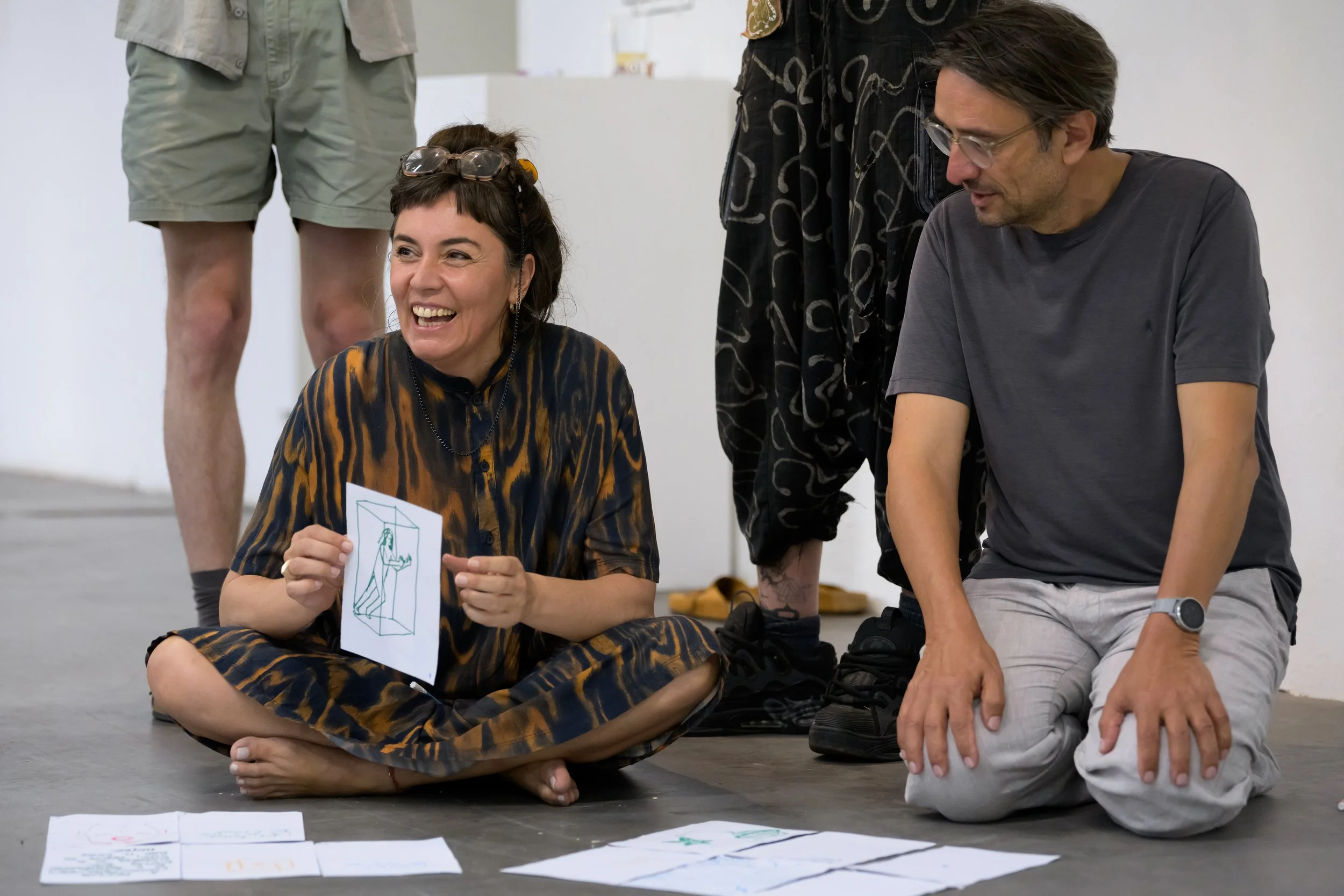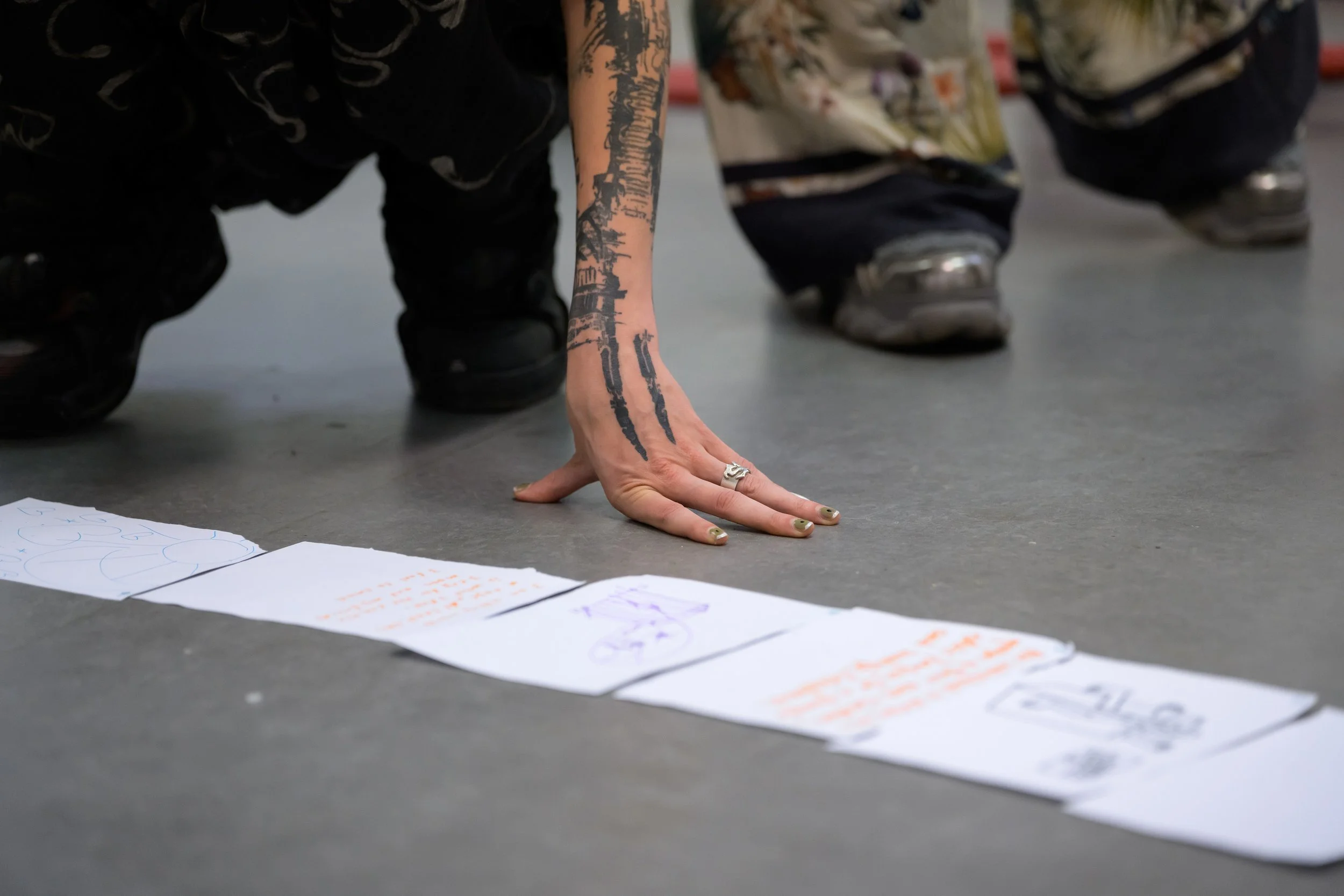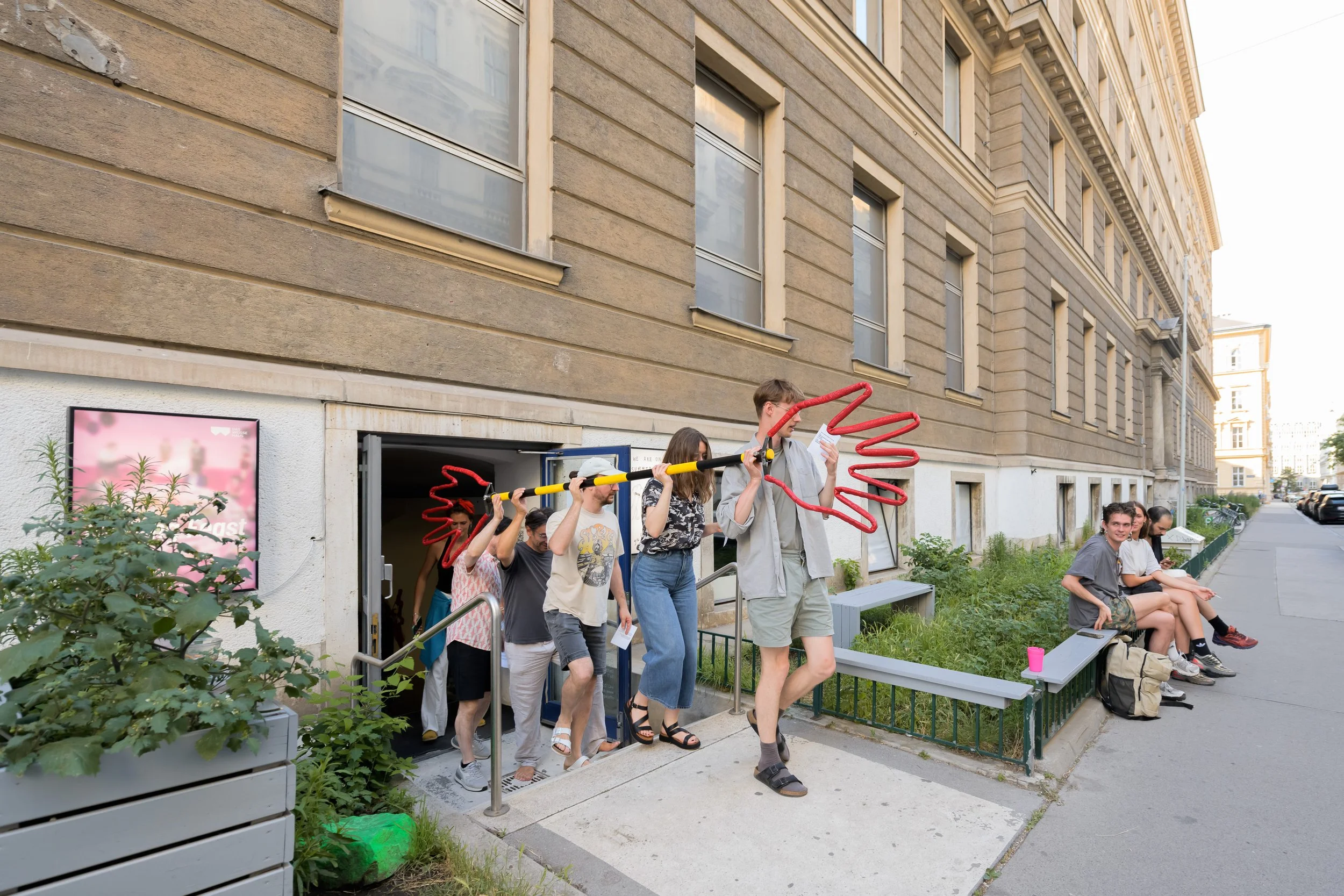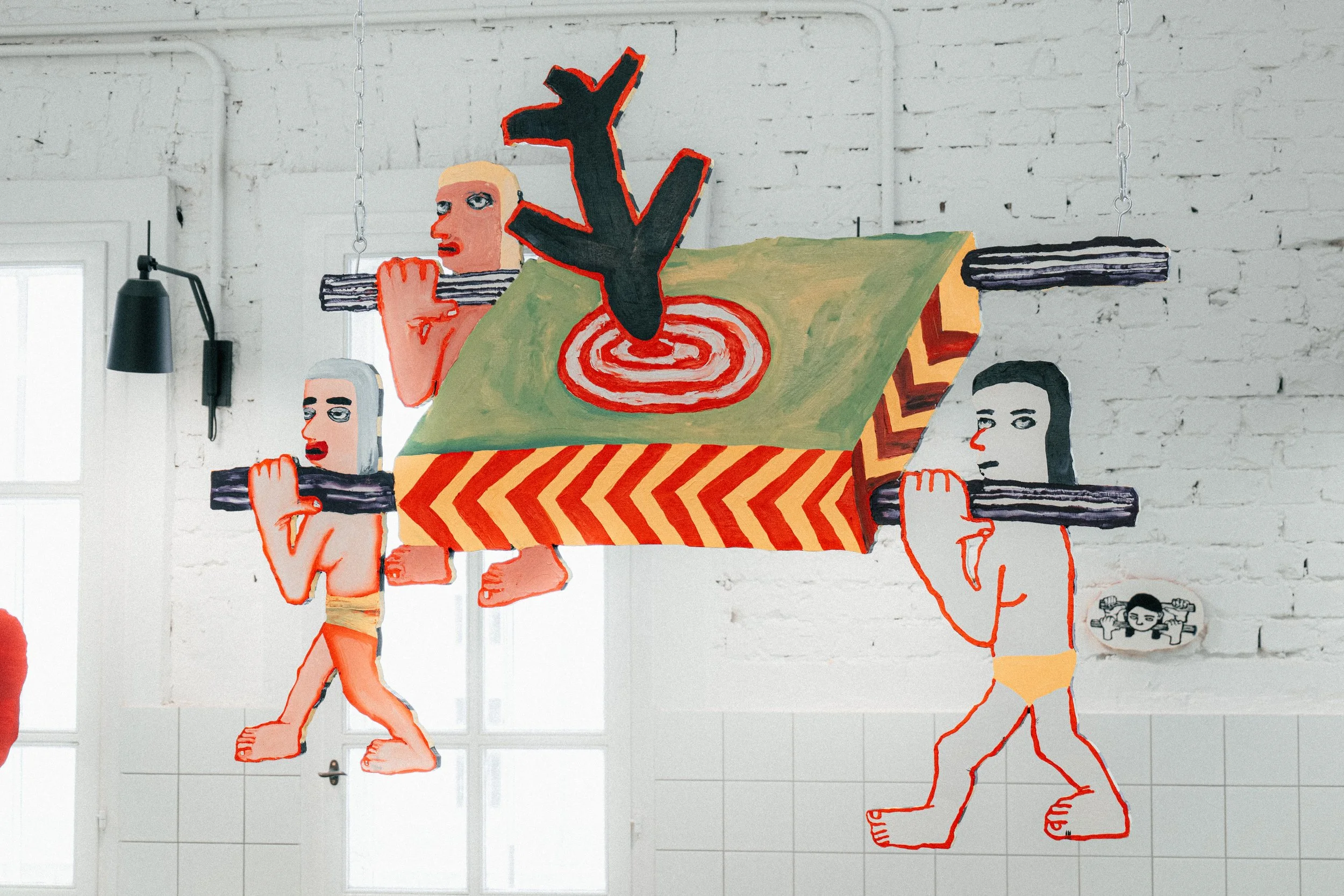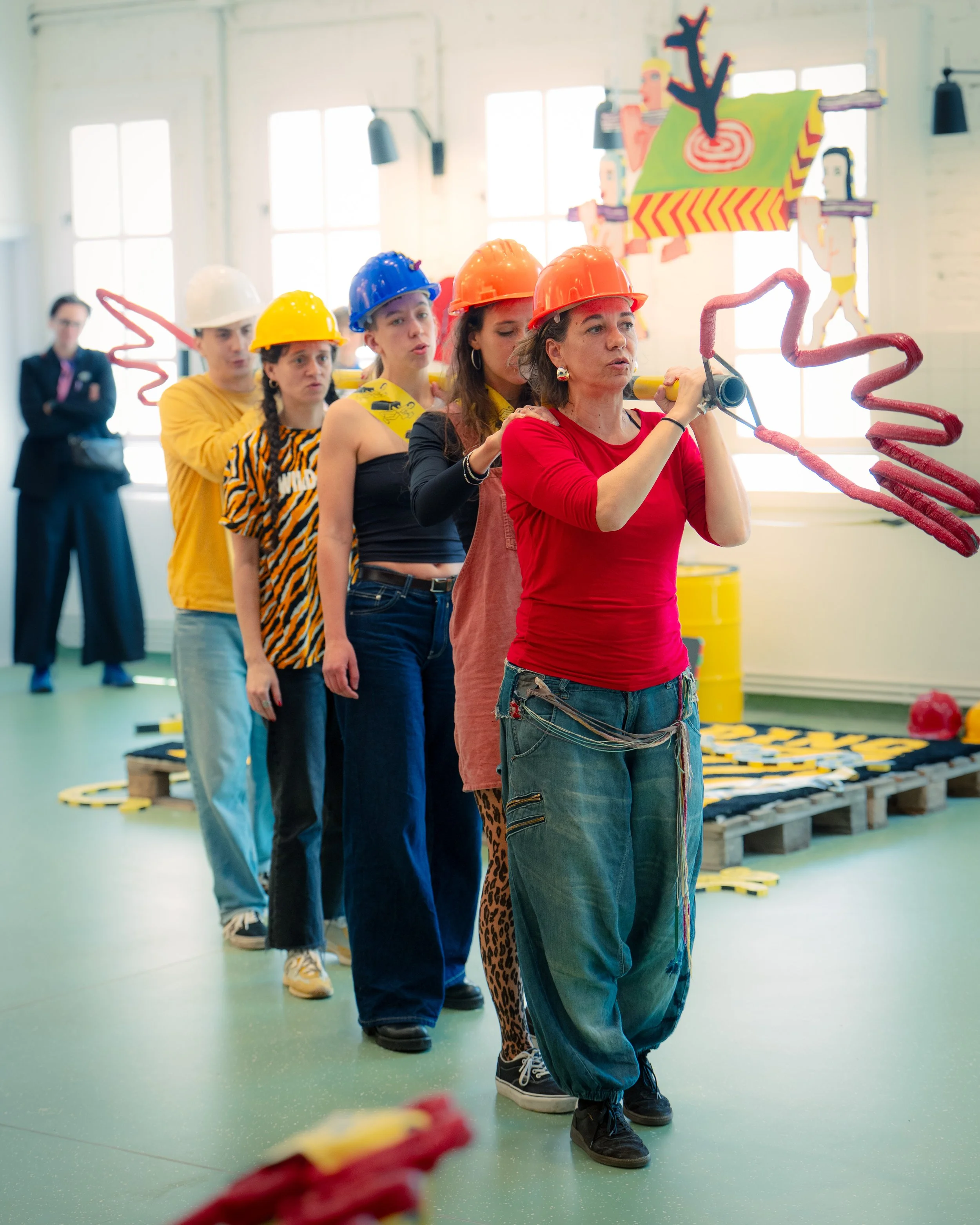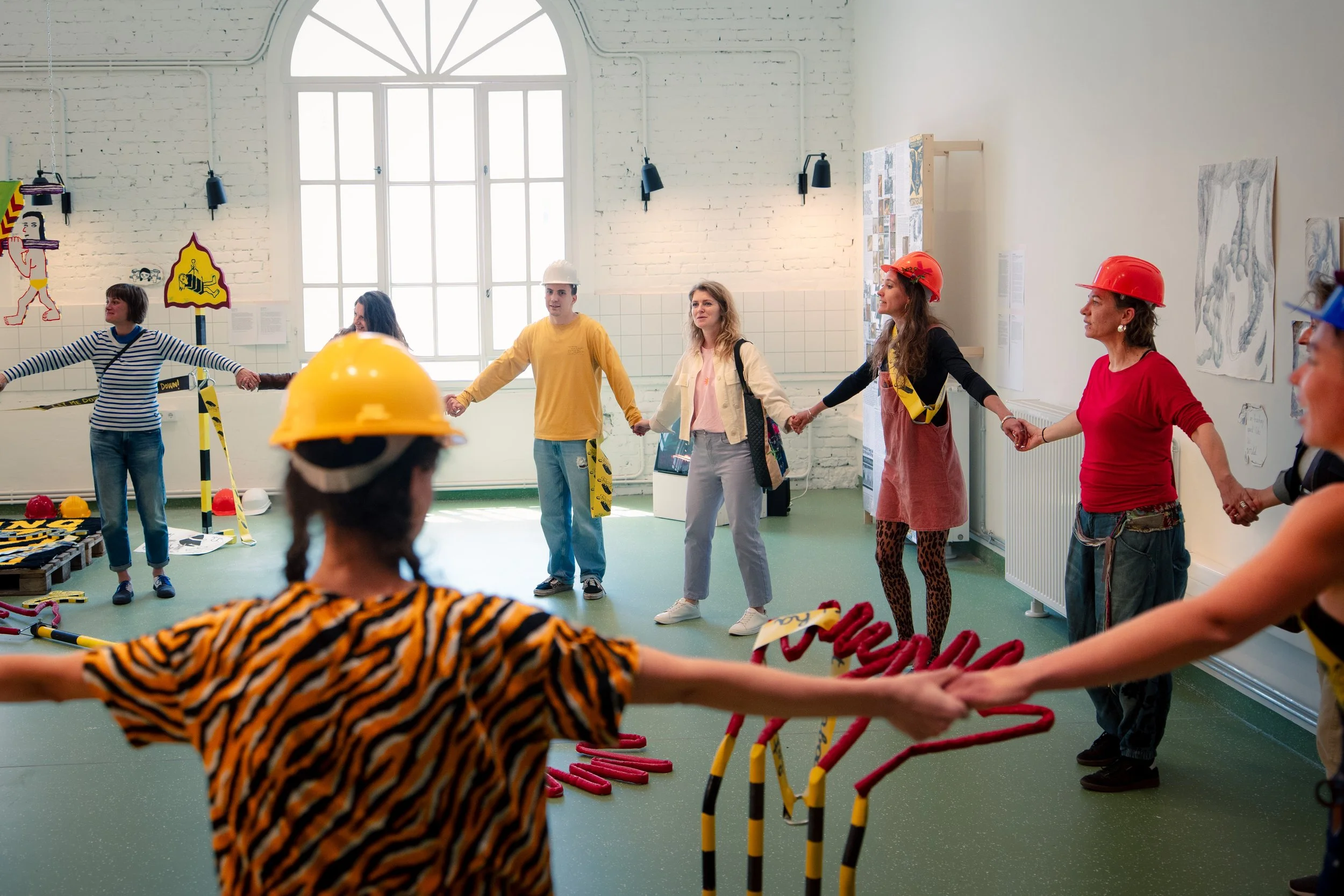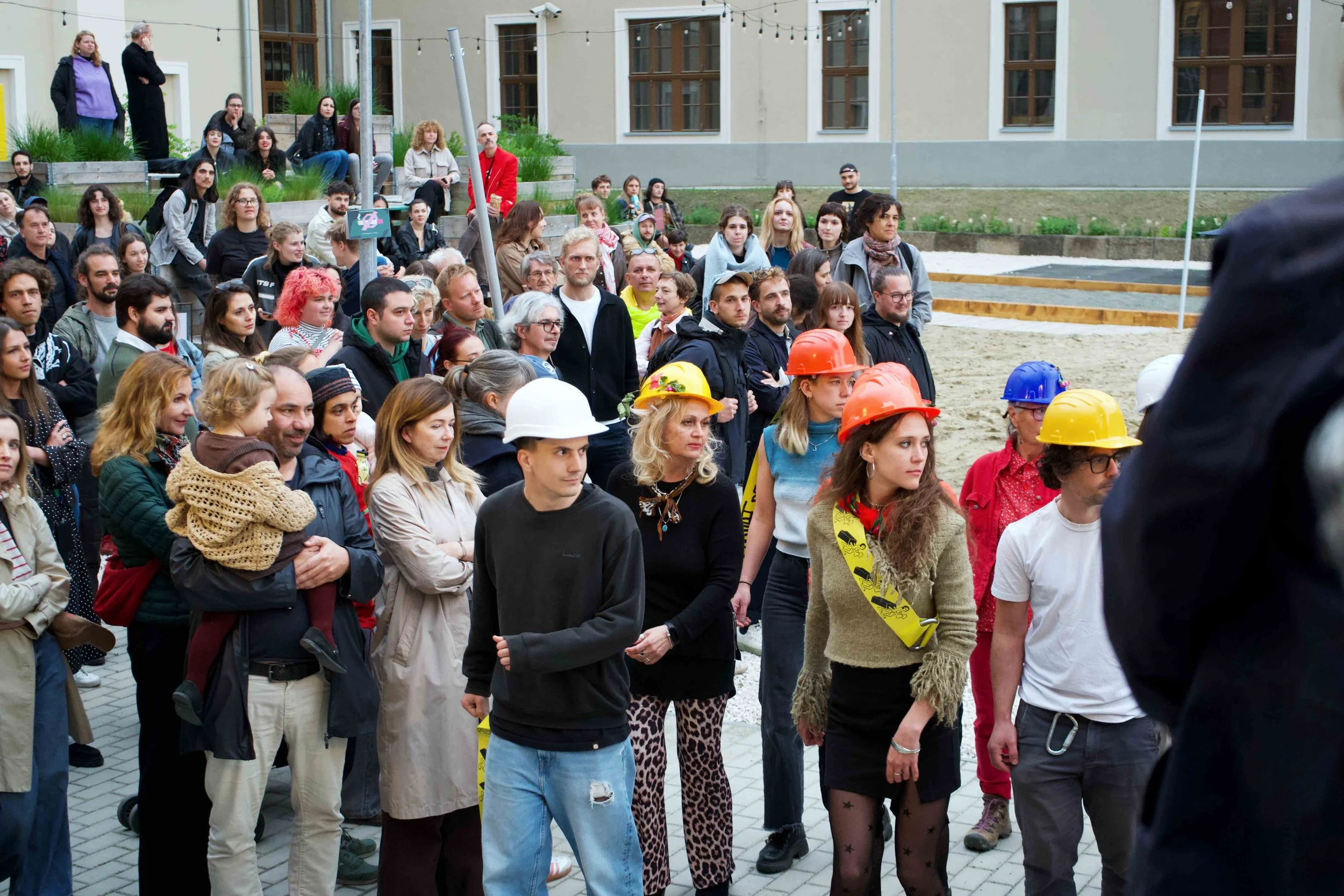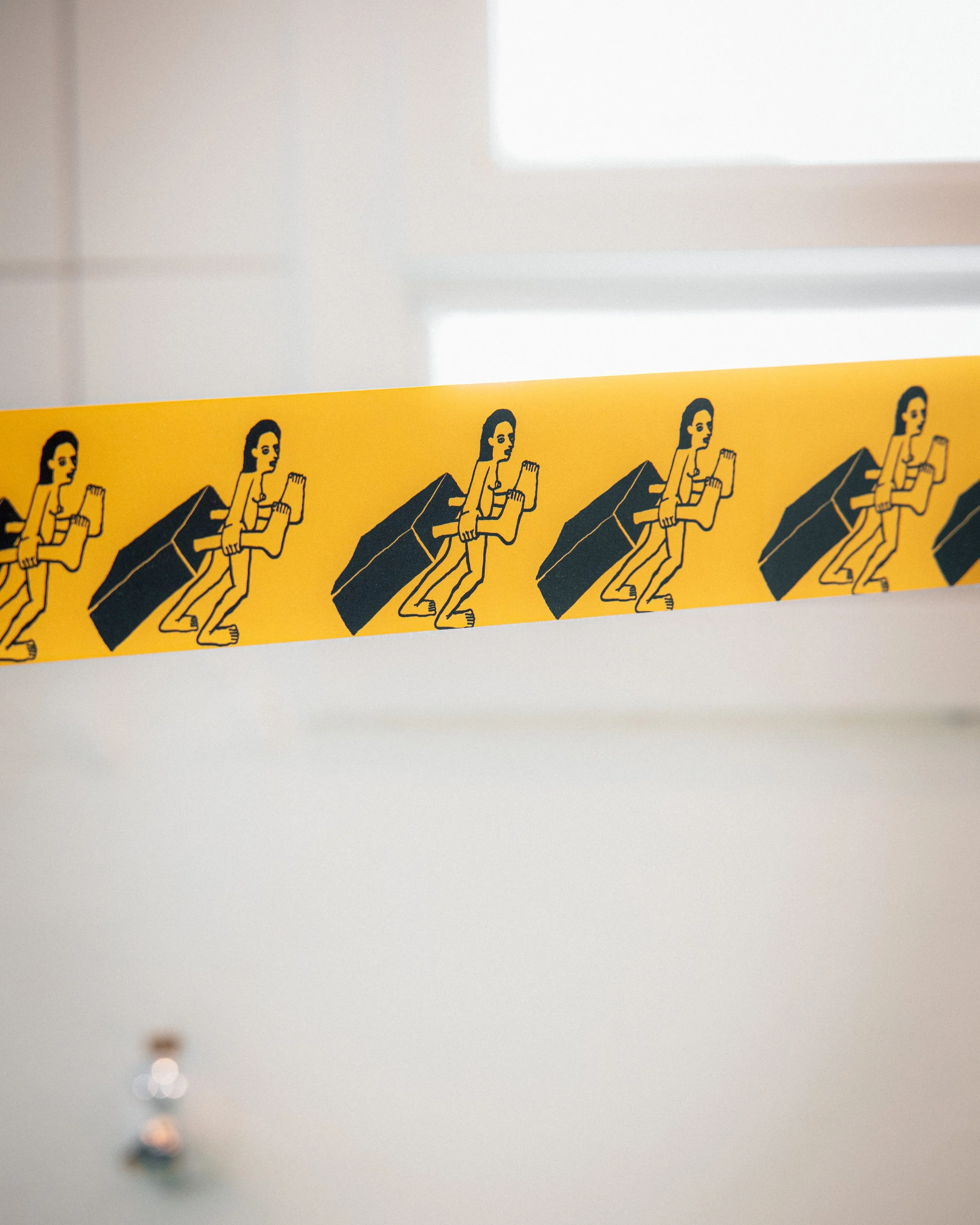
Teherletétel / Releasing burdens
„Tedd le, Mama, tedd le, tedd le, bánatodat vedd le!”
A Teherletétel című installáció egy közös teherletételre, bútemetésre invitál minket. „Tedd le, Mama, tedd le, tedd le, bánatodat vedd le!” Bár öreganyánk egy hegyet elhordott a hátán, mielőtt még mi is megszakadunk, függesszük fel a bánatot. Az ehhez a cselekvéssorhoz készített tárgyak bajosan körvonalazható nehezékeink súlyára lettek szabva. A tárgyegyüttes közösségi cselekvésre hív, a könnyítést, a megkönnyebbülést szolgálja: a közteherviselő kocsi, a rakd ide szőnyeg, a búval bélelt hordó, és a ne vállald rúd is arra biztatnak bennünket, hogy ne toljuk túl a cipekedést.
“Lay it down, Mama, lay it down—take off your sorrow!”
The installation Teherletétel (Releasing Burdens) invites us to participate in a shared act of release, a symbolic burial of sorrow. “Lay it down, Mama, lay it down—take off your sorrow!” Though our grandmothers once bore mountains on their backs, before we break under the same weight, let us suspend our grief. The objects created for this ritual are shaped by the elusive heaviness of our burdens. The ensemble of works calls for collective action and aims to bring relief and lightness: the burden-sharing cart, the "place it here" rug, the sorrow-stuffed barrel, and the “don’t carry it” pole all encourage us not to push our burdens beyond the limit.
A mű tulajdonképpen egy bútemető, egy szimbolikus helyszín, ami ennek a közös teherletételi folyamatnak egyszerre a kezdőpontja, és a közteherviselő útvonal utolsó állomása, ahol közösségben, a közösség által szabadulhatunk meg a minket megnyomó, kilapító súlyoktól. A némán végzett „cigőlés” egy kollektív női tapasztalat, mégis döntően a magányos küzdelemben reccsenek meg a hátak. Felelősségünk van abban, hogy egymás teherletételét biztosítsuk, és ne hagyjuk, hogy a bú elnémítson bennünket. A szélsőségesen sötét tapasztalatokra is kell legyen egy szó, mindig meg kell teremteni azt a nyelvet, teret, és közeget, amely visszavezeti a teherhordót a közösségbe.
The piece is, in essence, a grief cemetery—a symbolic site that marks both the beginning and end of a communal journey of unloading. It is a space where, through the community and within it, we can let go of the crushing weights that bear down on us. This silent act of “burden-carrying” is a collective female experience, and yet, backs often crack under the strain of solitary struggle. We have a responsibility to support each other in laying down our burdens and to ensure that sorrow does not silence us. Even the darkest experiences must be given voice—we must always create a language, a space, and a context that can guide the burdened back into the community.

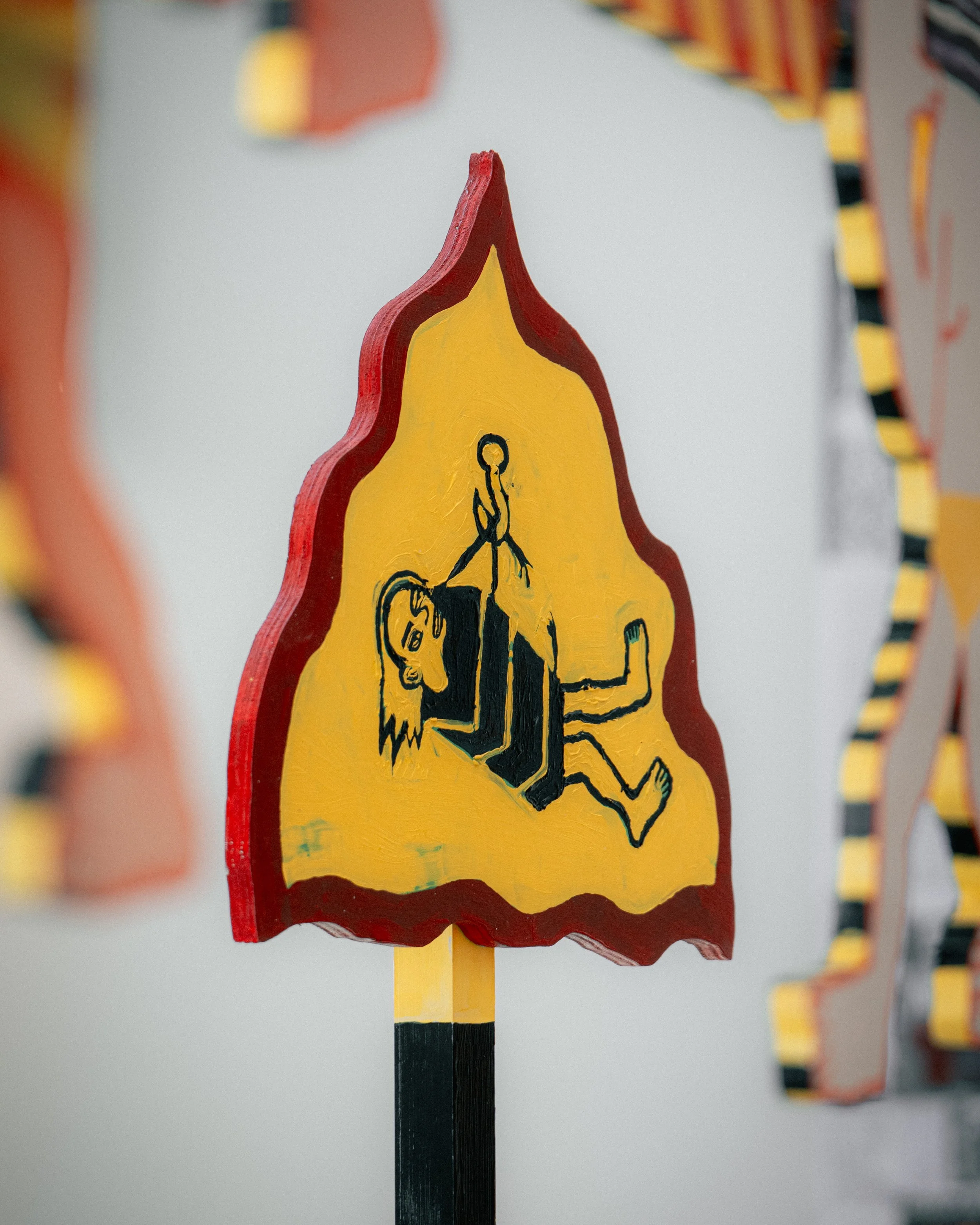
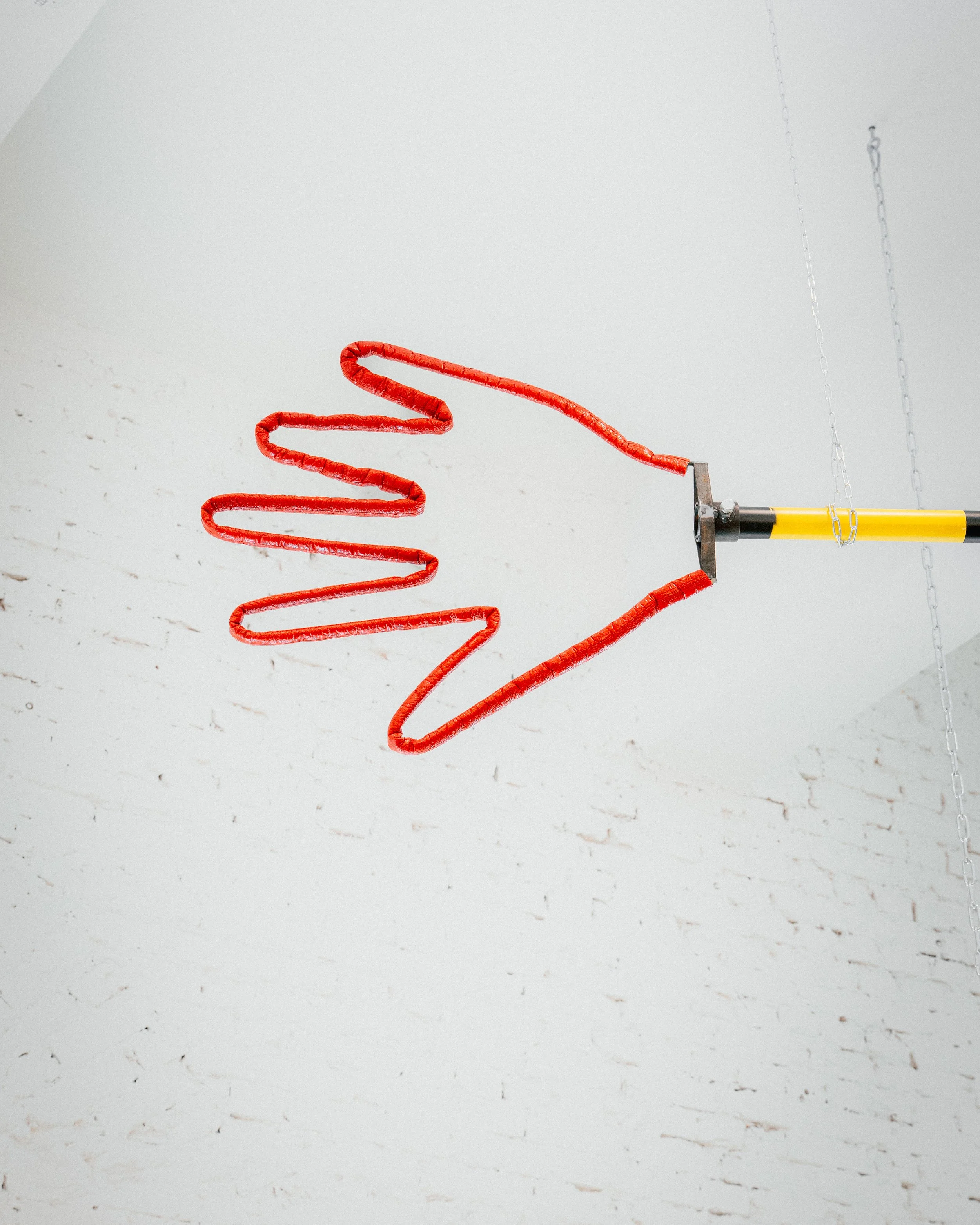
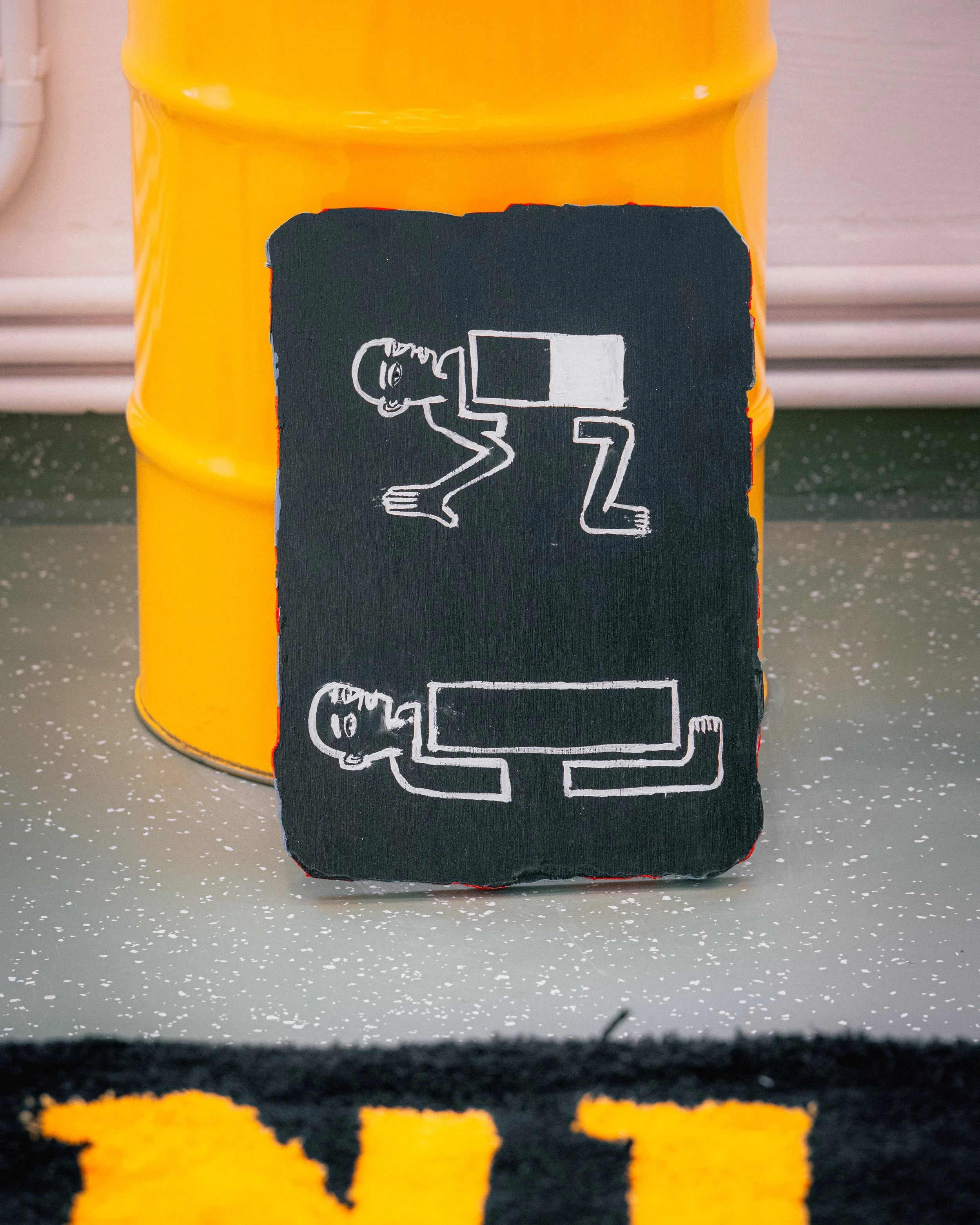


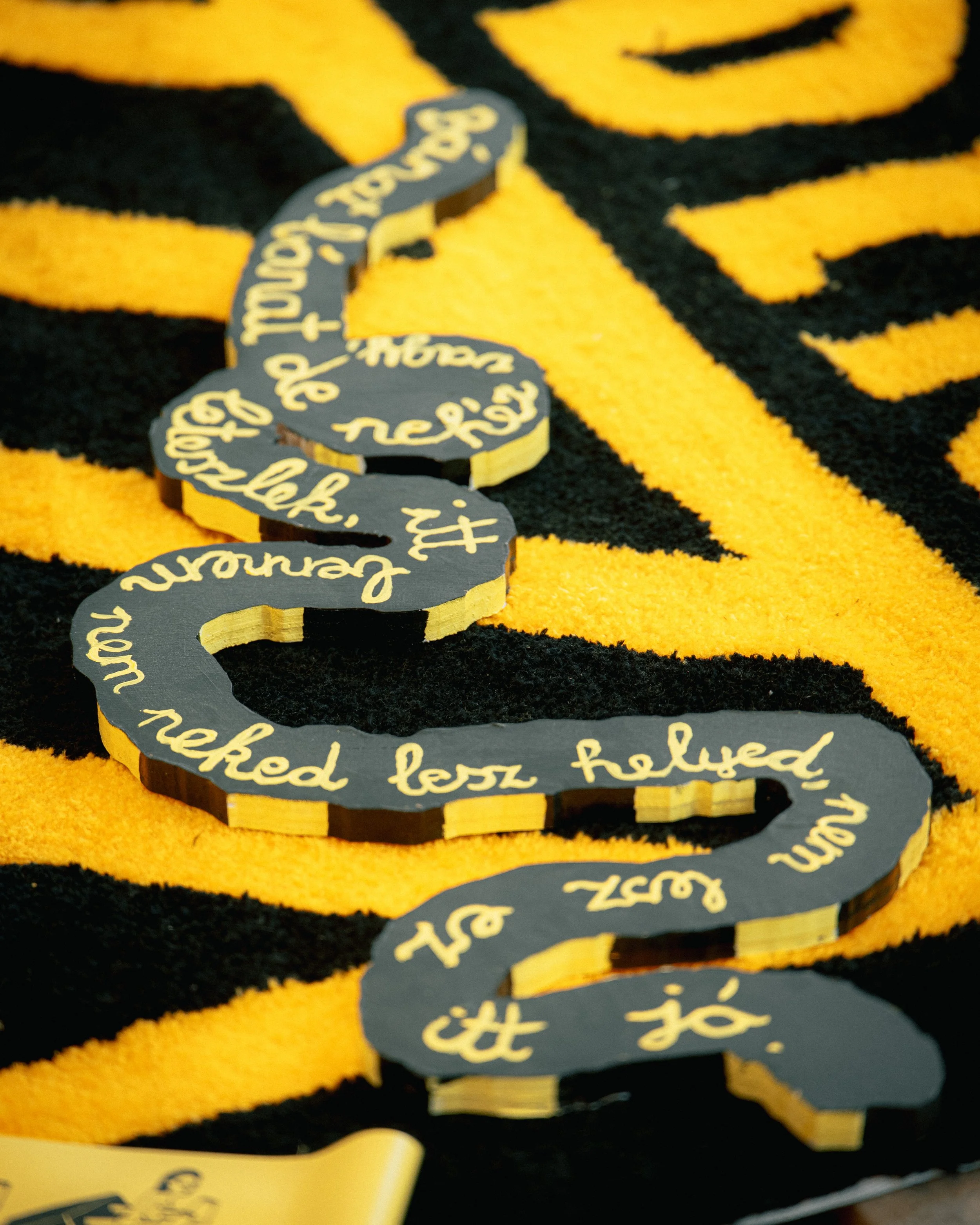
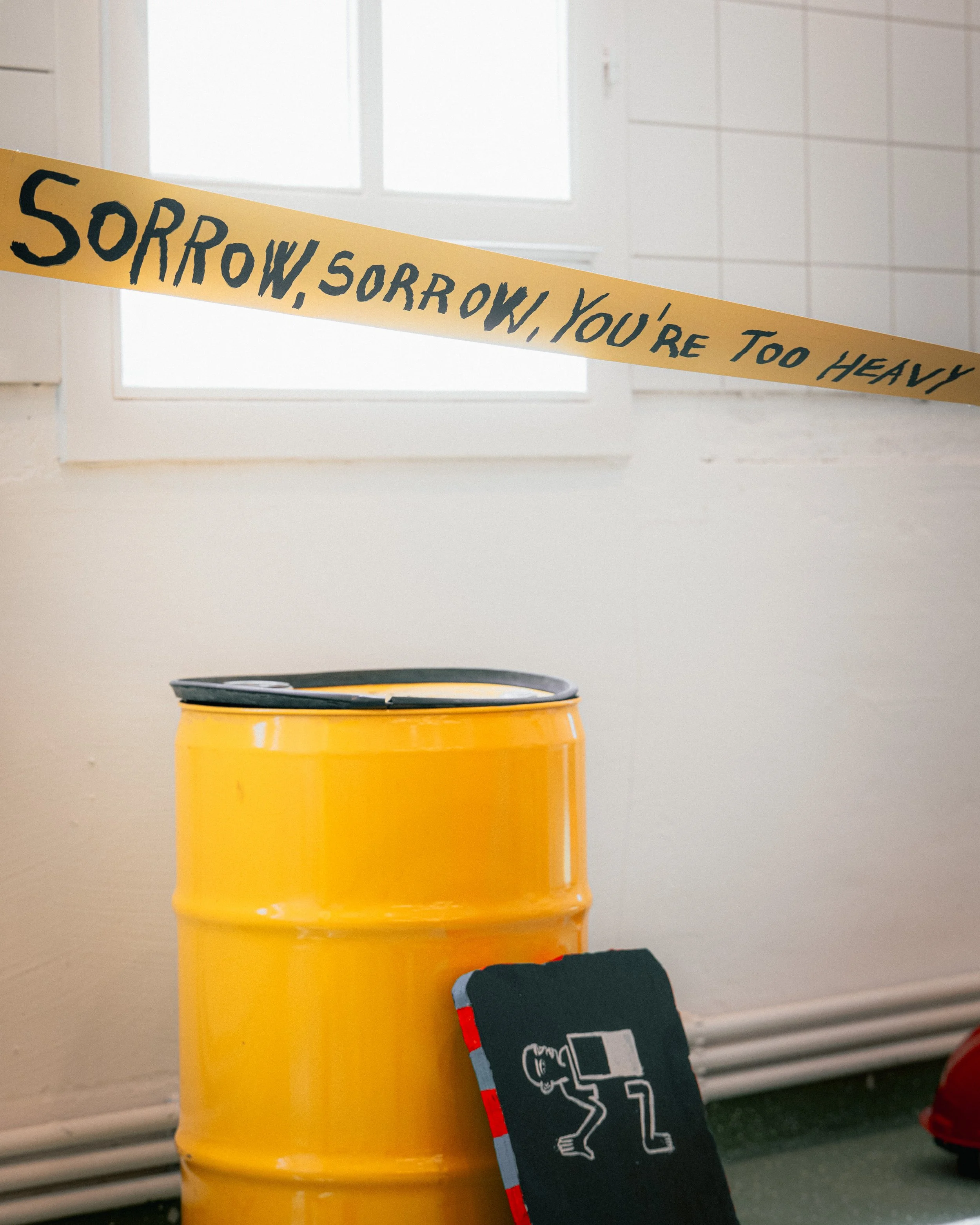
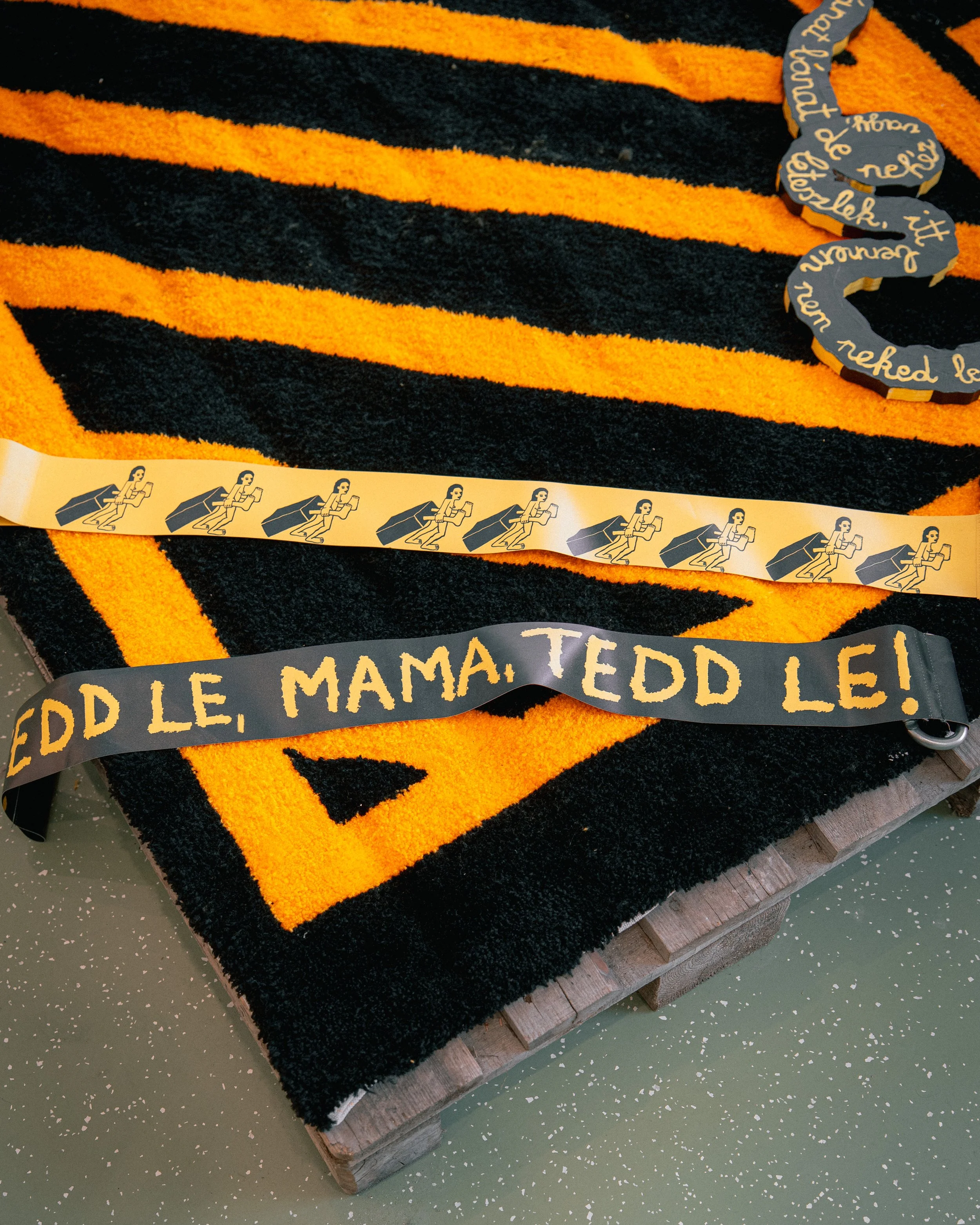
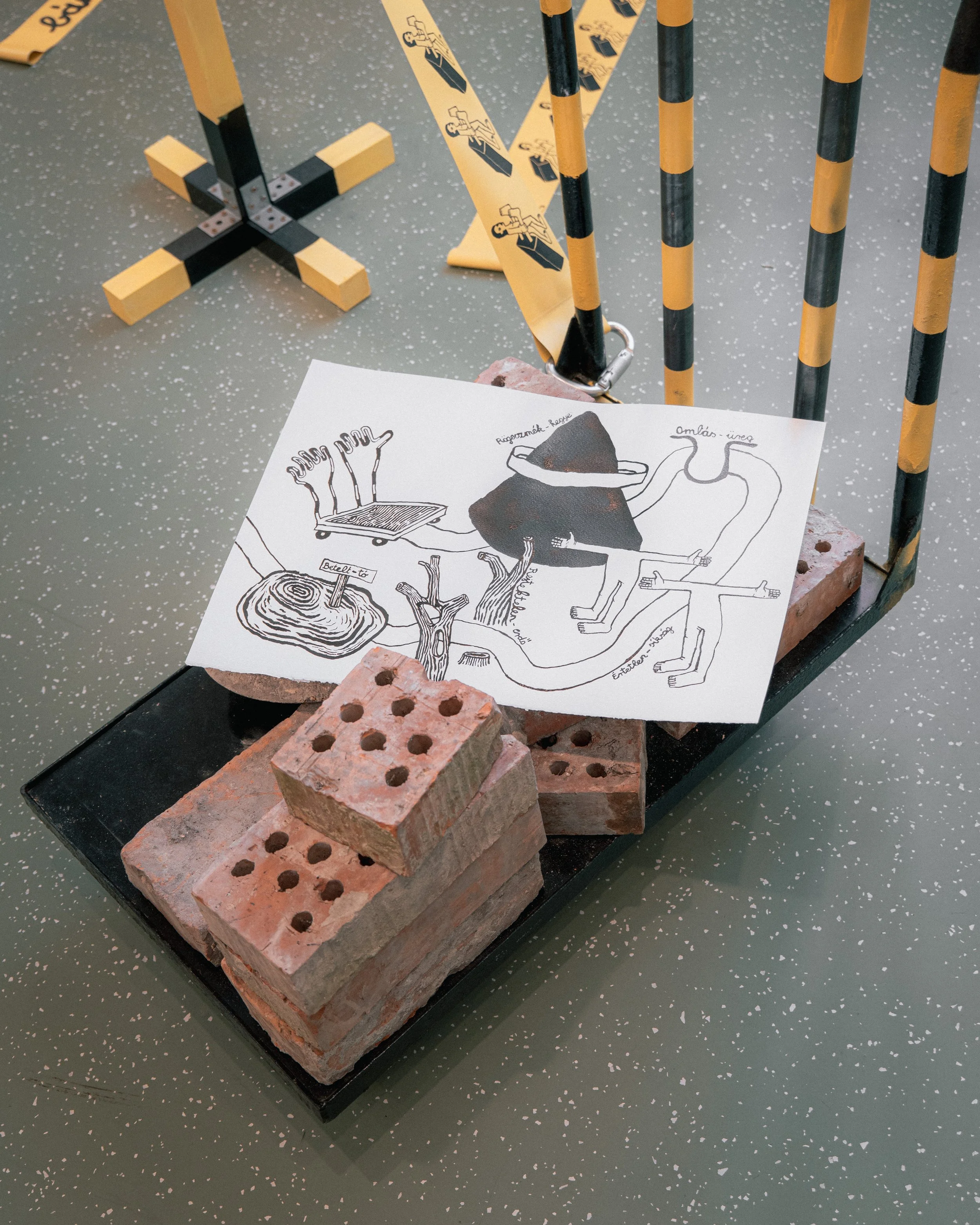
Teherletételi performansz / Releasing burdens performance
Tettük ide, tettük oda, dajkáltuk, altattuk, titkoltuk terhünket, most letennénk.
A Téglák Teherletételi performanszukon bútemetésre invitálnak. Nyelvet keresnek, hogy elmeséljék, mit rejtenek a falak, inkább leomlanak estig, lehet felépülnek reggelre, de nem hallgatnak. Bánat, bánat, de nehéz vagy, leteszlek, itt bennem, nem neked lesz helyed, nem lesz itt ez jó!
———
We placed it here, placed it there, cradled it, rocked it to sleep, hid our burden — and now we would like to lay it down.
In their Releasing burdens performance, the Bricks invite you to a ritual of mourning. They search for a language to tell what the walls conceal. They may fall down by night, perhaps build back by dawn — but they will not remain silent. Sorrow, sorrow, how heavy you are — I lay you down, here inside me — but there will be no place for you, this won’t be good for you here!
Teherletételi performanszon résztvevő téglák (Dévai Asszonykórus és a Falbontás Menti Téglatáncegyüttes)/ participating Bricks in the Releasing burdens performance:
Jó Zsalu/Habarcska: Kovács Erika, Alapkő/Résecske: Farkasinszky Edit, Szabotőr Fándli: Nemes Papp Kriszta, Bukoósisak: Poór Artúr, Beépített Ember/Malteregó: Losonczy András, Daloló Kő/Falazóelem: Botka Dóra, Terra Kotta: Ureczki Anita, Malterov Malterovna: Seress Anna, Bontógolyó: Koltay Dorottya Szonja
"ezek a falak nem minket védenek" / “these walls are not here to defend us” - OFF-Biennále 2025
A Teherletételi installáció és performansz az OFF-Biennálé keretében jött létre és az “ezek a falak nem minket védenek” c. kiállításon lett bemutatva a Merlin Színházban.
kurátor: Kálmán Rita, Lázár Eszter
——
The Releasing burdens installation and performance was created as part of the OFF-Biennále and was on view as part of “these walls do not protect us” in Merlin Theater.
curated by: Kálmán Rita, Lázár Eszter
SAJTÓ/PRESS:
From Budapest to Vienna:OFF-Biennale Guest Events at DAS WEISSE HAUS
Installation Activation: “Sorrow, sorrow, you’re too heavy” / Let’s release our burdens together by Dorottya Szonja Koltay
“Sorrow, sorrow, you’re too heavy, lying on my heart so long and steady. I’d sell you off, but none would buy—For sorrow rests in every heart.” These are the first 4 sentences of a traditional Hungarian folk song which is the starting point of Dorottya Szonja Koltay’s latest installation entitled Releasing Burdens. The artwork is, in essence, a grief cemetery—a symbolic site that marks both the beginning and end of a communal journey of unloading. It is a space where, through the community and within it, we can let go of the crushing weights that bear down on us. This silent act of ‘burden-carrying’ is a collective female experience, and yet, backs often crack under the strain of solitary struggle. We have a responsibility to support each other in laying down our burdens and to ensure that sorrow does not silence us. Even the darkest experiences must be given voice—we must always create a language, a space, and a context that can guide the burdened back into the community.
As an activation of her installation, Dorottya Szonja Koltay has organised performances involving a group of collaborators called The Bricks. In Vienna the artist invites us to participate in a shared act of release, a symbolic burial of sorrow carried out as a collective text writing and performing action.

